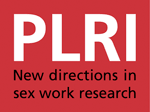sex work
Although sex work remains highly stigmatized around the world, its relatively high value (when compared to other kinds of work available for low-income women) allows sex workers to attain some level of economic, if not social, mobility. This article challenges the idea that sex work in ‘third world’ settings is always about mere subsistence. Instead, it suggests that sex workers in Costa Rica’s tourism sector work to survive, but they also demonstrate significant personal ambition and aim not only to increase their own consumption levels, but crucially to get ahead. In many settings migrants are at disproportionately high risk of

